AUSTIN, Texas — On Tuesday, April 9, many parts of Central Texas were hit with damaging and destructive hail.
North Austin, Elgin and Steiner Ranch saw hail sizes in the ping pong ball to golf ball range, while Marble Falls recorded baseball-size hail!
A lot of this hail came down in regular pellets, but others looked a bit wonky.

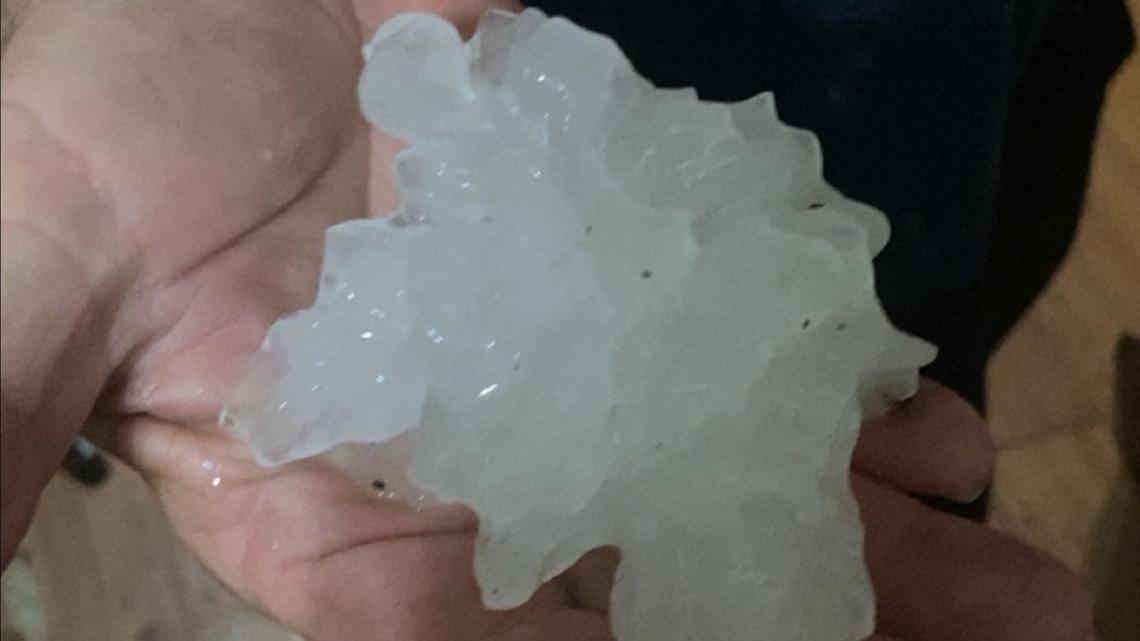

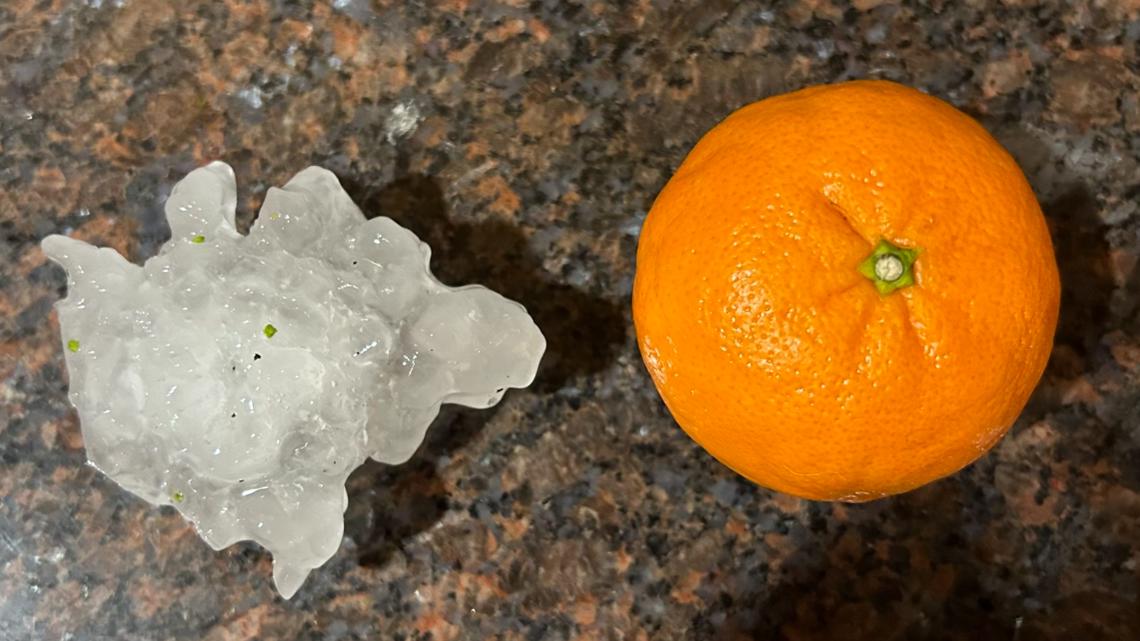
To understand how hail forms like this, you have to first understand how hail forms at all.
During a thunderstorm, there are large updraft and downdraft winds. Within the updraft, debris and super-cooled water droplets ascend high up into the thunderstorm, where temperatures are much, much colder.

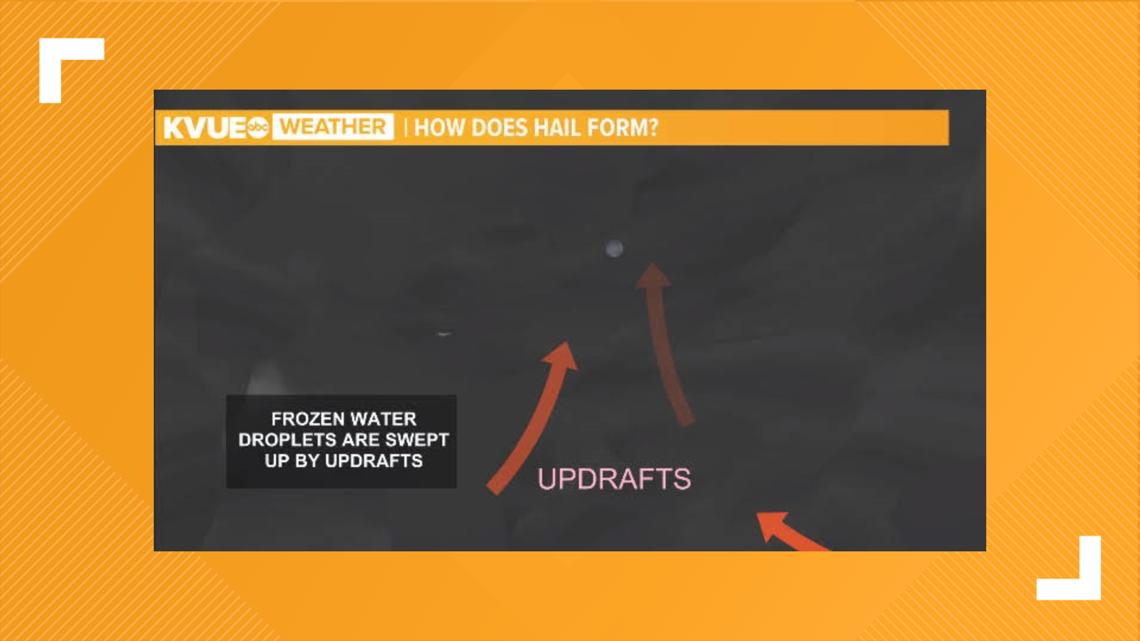
In the higher atmosphere, temperatures are well below freezing. The droplets freeze, fall back down below the freezing level and gather additional water.

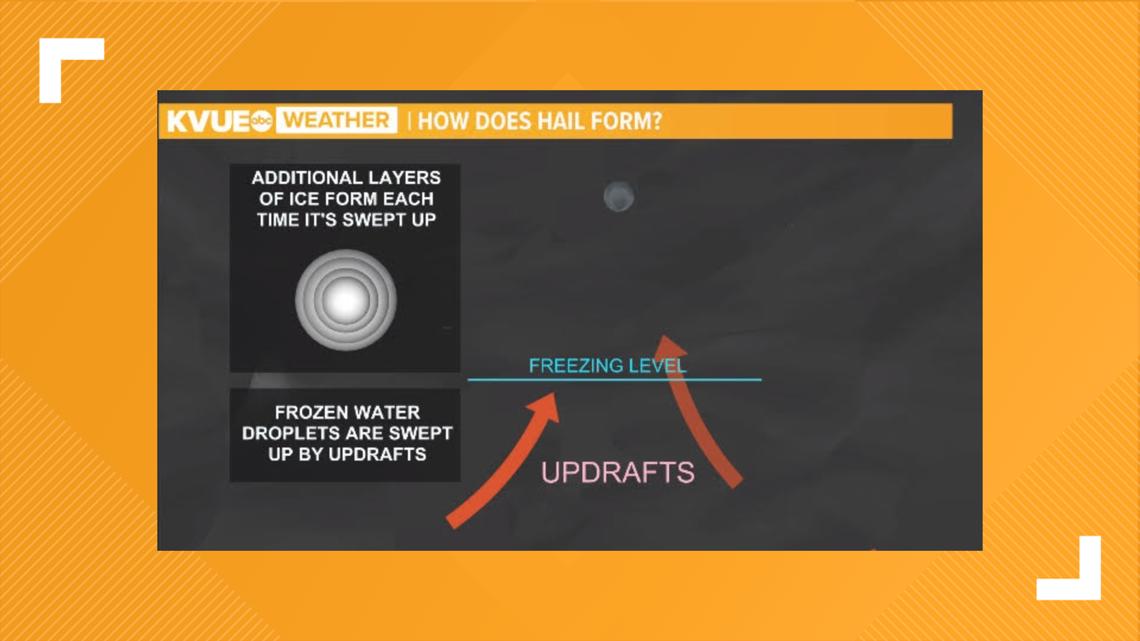
Then the updraft takes over again, and the original ice pellet will gather another layer of ice from the water surrounding it.
This happens over and over again until the weight of the hail exceeds the force of the updraft, and it falls to the ground.

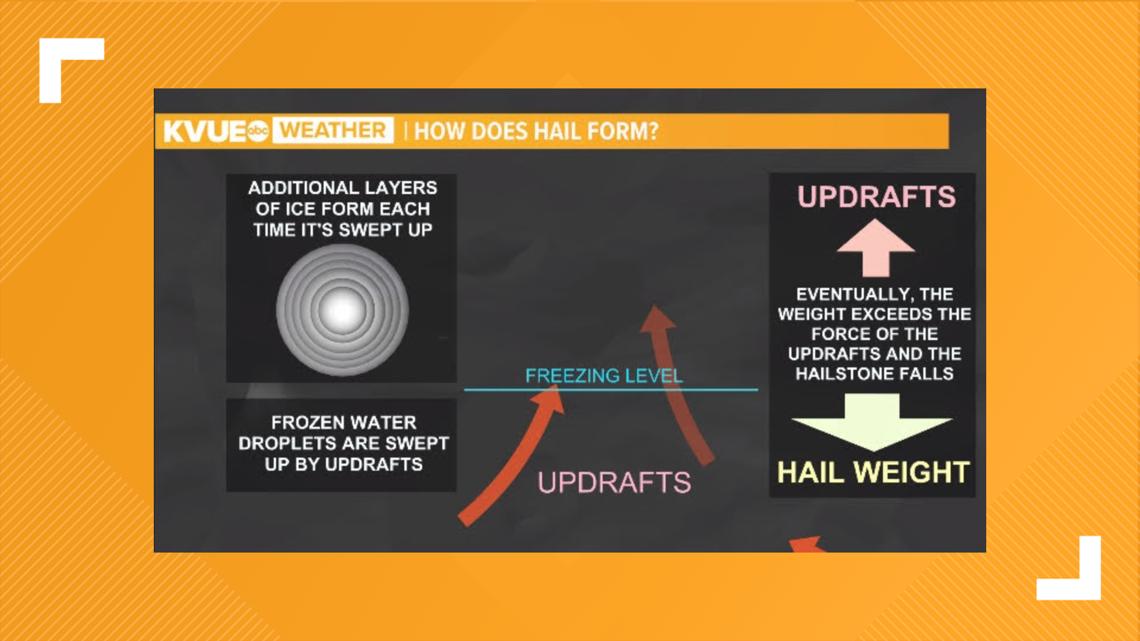
Below are examples of how strong updrafts need to be in order to support different sizes of hail.
For the April 9 storm, the National Weather Service got reports of hail from as small as a marble to as large as a baseball, so it's fair to say updrafts were as strong as 81 mph.

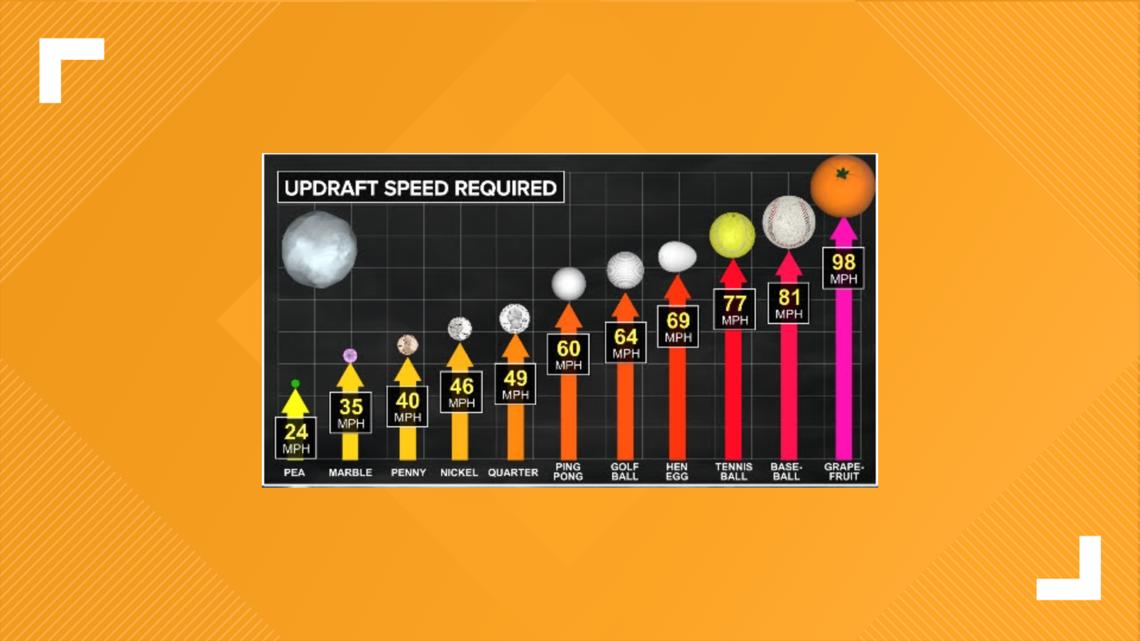
So, how does some hail get a spiky look, while others appear smooth?
Both types of hail form when strong updrafts are present. However, spiky hail occurs when the turbulent upper-atmospheric winds of a thunderstorm make hailstones collide into one another. Water is also needed for spiky hail. The more moisture a thunderstorm holds, the more potential it has to carry supercooled water.
When hail stones collide and have plenty of moisture and near-freezing temperatures surrounding them, the water on the outside of the hailstones acts as a glue, mixing of ice and water and congealing them together. Meteorologists call this "wet growth."

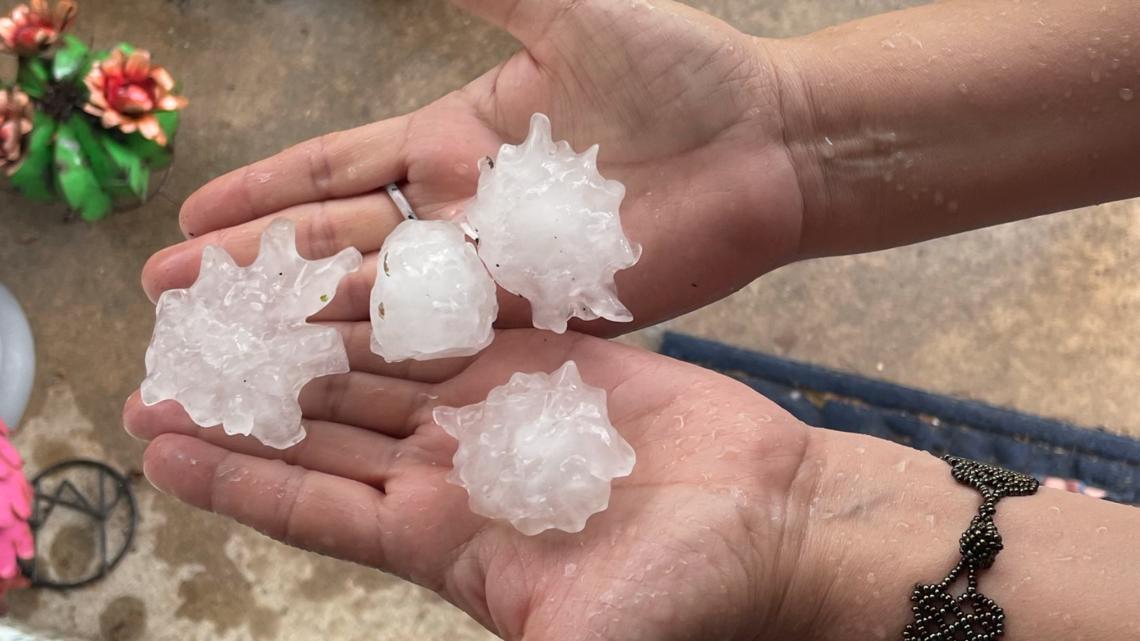
Alternatively, there is also "dry growth," which occurs more so for the smooth hailstones. For these hailstones, their core temperature is much colder, so the water particles freeze on contact, creating a layered appearance.
It's worth noting that hailstones can get bigger by both wet and dry growth within one thunderstorm. This is why we saw variations in the type of hail during Tuesday's storms.

